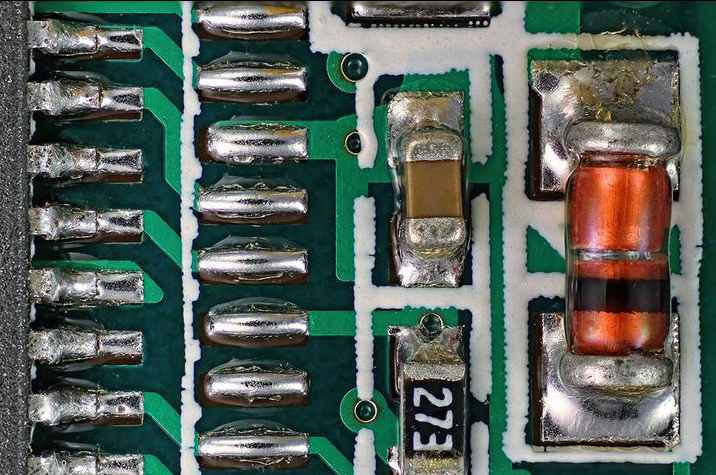
Infinity Lenses by Infinity Photo-Optical Company is the recognized world leader in long-distance and continuously-focusable microscope technology. Founded in 1984, Infinity continues to pioneer this field by offering innovative products and technologies which have received international acclaim (winner of three R&D 100 and two Photonics “Circle of Excellence” awards). Infinity’s clients range from small laboratories to Fortune 500 companies, aerospace industries, research centers, universities and agencies.
InfiniPro TS-160
The TS-160 is a radically new approach to macro/micro imaging. It has a Variable Iris, but no f/stops. It focuses internally without any changes to its outer dimensions. Its front lens is a specially-calculated microscope objective or a macro auxiliary. It ranges magnification from 0 to as much as 16x and can focus anywhere from infinity down to 18mm. Almost any camera up to and including those with 35mm sensors can be used with it. It is so easy to use that it literally sets the best image for you every time you focus. It may be a "counter-intuitive" experience even to experienced photographers. It is the InfiniProbe TS-160 from Infinity Photo-Optical Company. Quality macro/micro imaging has become simple and easy.
InfiniProbe MS
When it comes to machine vision, industrial, biological/entomological or general imaging requirements for a Variable Magnification Lens, imagine the convenience of harnessing the MACRO capabilities of the incredible InfiniProbe TS-160 transferred to a single, unitized C-mount version. Imagine focusing from infinity down to 16 millmeters—going from 0 up to 4x (onto the sensor)—all in a unit that fits every C (or CS-mount with an additional 5mm spacer) camera. That sums up what the InfiniProbe MS (Macro System) is. A Variable Magnification Lens like no other. But it is more: It completely covers 1-in. Sensor Formats as well.
Model KC VideoMax
The KC VideoMax is a true long-distance microscope. It uses objectives with apertures greater than stereomicroscopes and virtually equivalent to compound laboratory-type microscopes—but at many times their working distances. It works like a regular compound laboratory microscope as well. The KC VideoMax can be equipped with a variable iris diaphragm (included in ST and SD models) to set the proper aperture for greatest contrast and resolution and to control light throughput with IF series objectives. Since the highest aperture at which objective can be used is not necessarily the best aperture to use, all laboratory microscopes (the KC VideoMax is no exception) function best when used at c.75% of their potential apertures.
Model KX InfiniMax
The Model KX InfiniMax uses Infinity's ConstantMag system that maintains virtually the same magnification within the specified focusing range for each objective. With performance second only to Infinity’s own Model K2 DistaMax, KX InfiniMax is ideally suited for high resolution gauging/measuring applications. At the same time—within its operating range— KX InfiniMax is a world-class long-distance microscope. By adding the 3x Large Format Amplifier (LFA) it can be used with formats up to those equivalent to that of 35mm SLR's (24x36mm; 43mm diagonal).
Model K1 CentriMax
Now, the original CentriMax has been reconfigured mechanically with the same robust construction as our Model K2 DistaMax. It now joins the K2 DistaMax as a true K-Series Long-distance Microscope, earning the K1 designation. No longer just a C-mount optic, the K1 CentriMax can also be used with T2 (e.g., "F-mount") cameras as well—directly with formats up to 4/3-in. When larger formats are desired or when "flip-mirror" DSLRs are used, all that is required now, is to use a NTX 2x Amplifier at its rear.
Model K2 DistaMax
Since its inception, the Model K2 has been the definitive world-standard state-of-the-art long-distance microscope, capable of resolution and magnification comparable to that of regular compound laboratory-type microscopes but at many times greater working distances. Over time, the K2 evolved expanded capabilities such that it could image a "Blood Moon" down to a blood cell—even, if required, with a 1.4 NA oil-immersion microscope objective—in transmitted or coaxial illumination.



